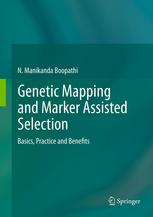

Most ebook files are in PDF format, so you can easily read them using various software such as Foxit Reader or directly on the Google Chrome browser.
Some ebook files are released by publishers in other formats such as .awz, .mobi, .epub, .fb2, etc. You may need to install specific software to read these formats on mobile/PC, such as Calibre.
Please read the tutorial at this link: https://ebookbell.com/faq
We offer FREE conversion to the popular formats you request; however, this may take some time. Therefore, right after payment, please email us, and we will try to provide the service as quickly as possible.
For some exceptional file formats or broken links (if any), please refrain from opening any disputes. Instead, email us first, and we will try to assist within a maximum of 6 hours.
EbookBell Team

0.0
0 reviewsGenetic mapping and marker assisted selection (MAS) is considered as one of the major tools in genetic improvement of crop plants in this genomics era. This book describes basics in linkage mapping, step-by-step procedure to perform MAS, achievements made so far in different crops, and limitations and prospects of MAS in plant breeding. It summarizes all this in a simple but comprehensive mode using suitable examples so as to explain the concept and its historical developments. To summarize, this book describes technologies for identification of genes of interest through genetic mapping, recaps the major applications of MAS to plant breeding; lists examples in which MAS is being applied to various breeding programs, and emphasizes the various difficulties that limit the application of MAS in plant breeding, providing possible solutions to overcome these difficulties, and finally tries to illustrate the future prospects. This book would be a valuable guide to the under-graduates and post-graduates of agricultural universities and institutes that are interested and/or involved in genetic improvement of crop plants using modern tools. Bibliography listed in this book constitutes two parts: literature cited and further reading. Literature cited contains references cited in the text and further information on the given concept/technique can be obtained from these references. Further reading provides a list of suggested readings for in-depth coverage of the topics.